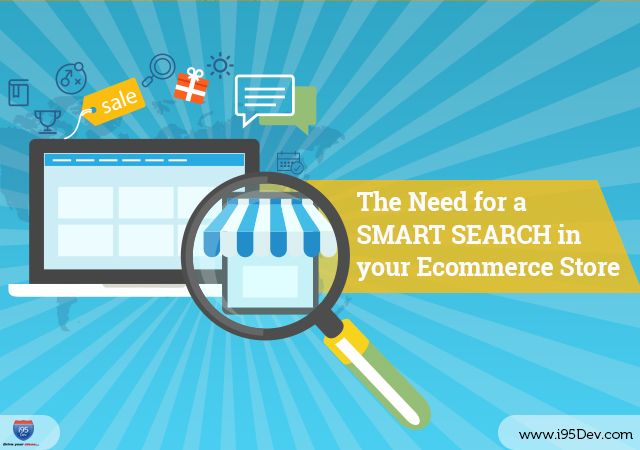One of the major contributors to the rising popularity of eCommerce is the convenience of shopping from a wide variety of products from the comforts of their location. The two most important things to note here are “convenience” and “wide variety of products”. Both things are very important and go hand in hand – having a limited portfolio is not even an option, but imagine having a huge portfolio of products but your consumers cannot find the product they are looking for easily.
This is why having a good smart search on your eCommerce store is necessary for the success of your eCommerce store. An efficient onsite search not only helps consumers find their product but is also an important touch point with your consumers – businesses can draw valuable insights into the shopping habits of consumers from their search behavior, thus allowing them to learn and target them more effectively.
Smart Search drives an Evolved Consumer Experience
Briefly, compare your online consumer with a consumer who walks into your bricks and mortar store and is offered immediate assistance to help him find the right product. A good product search option, on an eCommerce store, is the closest one can get virtually to provide a similar experience. An effective search is also known to directly influence the conversion rate positively and, therefore, justifies the cost and effort required in incorporating them.
Build a Lasting Impression
In most cases, consumers, when they visit a particular eCommerce store, are well aware of their requirement and simply head to the search box nonchalantly keying in their requirement. For most brands, these search boxes are usually among the first few touch points for consumers visiting their website. To build a lasting impression and to convert the visitor into a paying customer the accuracy and relevance of the search result are a must.
Businesses can take this to the next level leveraging the auto-suggest features that most good search tools provide. The auto-suggest feature allows your consumers to better articulate their requirement while giving you the flexibility to lead the consumer to the desired landing page. An optimized search tool also helps in putting away the apprehensions of first-time buyers from your eCommerce store.
Zero Results Page – A Huge Turnoff
Zero results page can be a huge turnoff for consumers leaving them frustrated and setting them up to move away from your eCommerce store. More advanced search functionality can be used to show similar or complimentary products in the absence of an exact match. With this, there is a higher chance of conversion as against a blank screen with zero search results.
Further effort must be made to use tools that can handle commonly misspelled words or those keyed in without spaces and still produce relevant results. This also holds good for hastily entered inputs or inputs entered differently due to phonetic diversities across languages. Remember, the right search technique can help you target a bigger audience not limited by demographic barriers.
Understand Consumer Behavior
The search terms keyed in by consumers provide valuable insight about his / her needs, desires, and possibly frustrations too. For instance, over and above simply keying in information about a product, customers can also look for information like employment with the brand, wanting to provide feedback or finding out store location. Sometimes such occurrences with a pattern reveal a lot more and when addressed do wonders for your business – used to improve the layout of a site, promote relevant information to the front page or even reach out to him individually for some specific requirement.
Narrow down the Consumer Intent
A detailed study of search queries can unearth a lot of valuable information; this can, however, vary with the type of products in question as well. A systematic study of search terms and the action that follows can possibly help you predict the consumer intent based on the search terms they use.
For example – a single word search query, such as “dress” or “boots”, can possibly indicate low purchase intent and more specific search terms, such as “red Nike shoes for women size 7”, could indicate a more serious intention to buy. Armed with knowledge like this, merchants can use sophisticated merchandising algorithms to determine the order of results.
Prioritized Selling – helps Marketing efforts as well
Retailers can use the search results to page to market products more effectively. Platforms like eBay and Amazon use this very well – by displaying popular products (or products from high rated sellers) first and less popular ones later.
Conclusion
The attention span of a consumer online is practically in microseconds and if he or she is put off at the very first level (the search box) there is a fat chance of them stepping away from the website. The ease of website navigation, as well as internal site search, can make your products easily discoverable, which coupled with eCommerce best practices can certainly help you drive revenue and elevate customer loyalty.
The bottom line, you might spend a lot of marketing dollars driving consumers to your website, your website might be the best looking among all your competitors, but if the consumers cannot find the product they are looking for they will not purchase from you.





